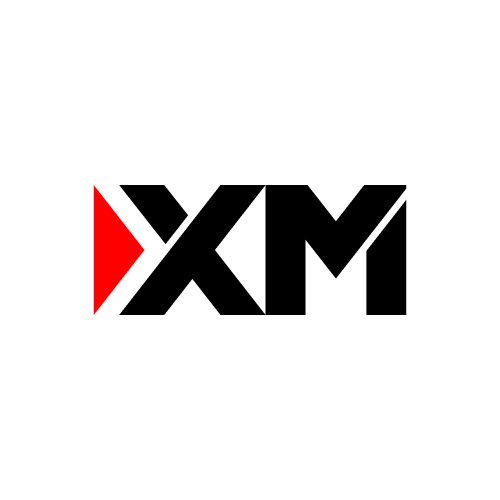The US Bureau of Labor Statistics will release the Consumer Price Index (CPI) data for September on Thursday, October 13 at 12:30 GMT and as we get closer to the release time, here are the forecasts by the economists and researchers of 10 major banks regarding the upcoming US inflation print.
On a monthly basis, the CPI is expected to rise by 0.2%. The Core CPI, which excludes volatile food and energy prices, is expected to have risen by 0.5% last month, which is below August's 0.6% read. Headline is expected at 8.1% year-on-year vs. 8.3% in August, while core is expected at 6.5% YoY vs. 6.3% in August.
ANZ
“We expect US core CPI to rise by 0.5% MoM in September, while lower energy prices should result in headline inflation increasing by 0.3%. Elevated rent and robust wage growth are expected to keep services inflation uncomfortably high. A confluence of factors should put downward pressure on goods inflation, namely moderating supply bottlenecks, softer commodity prices, lower shipping rates, and a stronger USD. The Fed remains singularly focused on inflation. It intends to leave policy restrictive for an extended time. This will result in a lengthy period of below-trend growth and higher unemployment.”
Commerzbank
“We expect the core CPI to rise by 0.5% on the previous month. This would bring the year-on-year rate to about 6.5%; however, the 3-month rate would ease. Over the medium-term, rental data from the real estate sector point to somewhat slower growth in rents, which could gradually reduce underlying inflationary pressures. The outlook for headline inflation is better. Here, the further fall in petrol prices is easing the situation. In addition, the rise in food prices should slowly lose momentum. We expect overall consumer prices to have risen by 0.3% compared to the previous month. The 12-month inflation rate would then fall again slightly to 8.1%.”
ING
“The headline rate will be depressed by the lagged effects of the fall in gasoline prices, which is also likely to translate into lower airline fares to some extent. However, the core (ex-food and energy) component is set to continue rising at a rapid pace. We look for a 0.4% MoM increase in prices, which would nudge the annual rate of core inflation up to 6.5% from 6.3%. This unfavourable shift is primarily due to housing costs and recreation prices and should cement expectations for a fourth consecutive 75 bps interest rate increase from the Federal Reserve on 2 November.”
TDS
“Core prices likely stayed strong in September, with the series registering another large 0.5% MoM gain. Shelter inflation likely remained strong, though we look for used vehicle prices to retreat sharply. Importantly, gas prices likely brought additional relief for the headline series again, declining by about 5% m/m. Our MoM forecasts imply 8.2%/6.6% YoY for total/core prices.”
Deutsche Bank
“We highlight that with gas prices down another near 7% from August to September, energy will again drag on the headline CPI print (+0.28% forecast vs. +0.12% previously). However, core CPI (+0.44% vs. +0.57%) will draw the most focus especially given last month’s upside surprise. Assuming our forecasts are correct, year-over-year headline CPI should continue to decline, falling two-tenths to 8.1%, while core should tick up two-tenth to peak at 6.5%. Whether one number should be the basis for huge swings in markets, it seems inevitable that a notable miss on core on either side could bring about big moves in trading over the coming weeks so stand by.”
SocGen
“We forecast a 0.2% headline CPI increase for September. Our core rate forecast is for 0.5%, but this figure is rounded-up, and our actual calculation is 0.45%. The emphasis on the unrounded number is to declare that we would not be at all surprised by a 0.4% MoM increase but would be surprised if the figure were 0.6% or higher.”
NBF
“Headline prices could have increased 0.2% MoM. If we are right, the YoY rate should come down to 8.1% from 8.3%. The core index, meanwhile, may have continued to be supported by rising rent prices and advanced 0.4% on a monthly basis. This would translate into a two-tick increase of the 12-month rate to 6.5%.”
CIBC
“The relief from higher prices at the pump extended into September, but continued pressure in food prices, where a labor shortage in the transportation industry and extreme weather conditions remain issues, could have resulted in a 0.2% monthly advance in total prices, leaving annual inflation at 8.1%. That would also include pressure in components outside of food and energy, which likely rose by 0.4% m/m, as the shelter component is still picking up the impact of leases resetting at higher rates, reflecting the housing market strength seen last year. Leaning against that could be some weakness in used car prices, in line with marginal improvement in supply chains. All told, core annual inflation is set to accelerate by two ticks, to 6.5%, magnified by base effects. We are in line with the consensus and market reaction should therefore be limited.”
Wells Fargo
“For September, we forecast headline CPI rose 0.2%, bringing the YoY rate down slightly to 8.1%. Energy prices were likely a considerable part of soothing the headline rate last month, as gasoline prices declined through most of the month. But scorching core inflation, up at a 3-month annualized rate of 6.5% in August, means that declines in commodity prices alone will not cut it when it comes to muting inflation for the long-haul. We expect core inflation rose 0.5% in September, which is above consensus but below August's 0.6% upward surprise. The more moderate core gain is likely to stem from goods inflation as consumer spending shifts back toward services and retail inventories are starting to pile up. Core services should again be a primary driver of inflation this month, as lags from rent and home price measures indicate another strong monthly gain. Wage gains are particularly important to the services sector, and by remaining elevated, continue to complicate the Fed's fight against inflation.”
Citibank
“US September CPI MoM – Citi: 0.2%, prior: 0.1%; CPI YoY – Citi: 8.1%, prior: 8.3%; CPI ex Food, Energy MoM – Citi: 0.5%, prior: 0.6%; CPI ex Food, Energy YoY – Citi: 6.6%, prior: 6.3%. We expect a continuation of the trend of still solid monthly increases. Risks are tilted slightly to the downside though due to a softening in goods prices generally over the coming months. Meanwhile, the trend of services prices, both for shelter and other services, continue to be the more important underlying drivers of inflation with we are again penciling in strong increases.”
Information on these pages contains forward-looking statements that involve risks and uncertainties. Markets and instruments profiled on this page are for informational purposes only and should not in any way come across as a recommendation to buy or sell in these assets. You should do your own thorough research before making any investment decisions. FXStreet does not in any way guarantee that this information is free from mistakes, errors, or material misstatements. It also does not guarantee that this information is of a timely nature. Investing in Open Markets involves a great deal of risk, including the loss of all or a portion of your investment, as well as emotional distress. All risks, losses and costs associated with investing, including total loss of principal, are your responsibility. The views and opinions expressed in this article are those of the authors and do not necessarily reflect the official policy or position of FXStreet nor its advertisers. The author will not be held responsible for information that is found at the end of links posted on this page.
If not otherwise explicitly mentioned in the body of the article, at the time of writing, the author has no position in any stock mentioned in this article and no business relationship with any company mentioned. The author has not received compensation for writing this article, other than from FXStreet.
FXStreet and the author do not provide personalized recommendations. The author makes no representations as to the accuracy, completeness, or suitability of this information. FXStreet and the author will not be liable for any errors, omissions or any losses, injuries or damages arising from this information and its display or use. Errors and omissions excepted.
The author and FXStreet are not registered investment advisors and nothing in this article is intended to be investment advice.
Recommended content
Editors’ Picks

EUR/USD bounces off lows, retests 1.1370
Following an early drop to the vicinity of 1.1310, EUR/USD now manages to regain pace and retargets the 1.1370-1.1380 band on the back of a tepid knee-jerk in the US Dollar, always amid growing optimism over a potential de-escalation in the US-China trade war.

GBP/USD trades slightly on the defensive in the low-1.3300s
GBP/USD remains under a mild selling pressure just above 1.3300 on Friday, despite firmer-than-expected UK Retail Sales. The pair is weighed down by a renewed buying interest in the Greenback, bolstered by fresh headlines suggesting a softening in the rhetoric surrounding the US-China trade conflict.

Gold remains offered below $3,300
Gold reversed Thursday’s rebound and slipped toward the $3,260 area per troy ounce at the end of the week in response to further improvement in the market sentiment, which was in turn underpinned by hopes of positive developments around the US-China trade crisis.

Ethereum: Accumulation addresses grab 1.11 million ETH as bullish momentum rises
Ethereum saw a 1% decline on Friday as sellers dominated exchange activity in the past 24 hours. Despite the recent selling, increased inflows into accumulation addresses and declining net taker volume show a gradual return of bullish momentum.

Week ahead: US GDP, inflation and jobs in focus amid tariff mess – BoJ meets
Barrage of US data to shed light on US economy as tariff war heats up. GDP, PCE inflation and nonfarm payrolls reports to headline the week. Bank of Japan to hold rates but may downgrade growth outlook. Eurozone and Australian CPI also on the agenda, Canadians go to the polls.

The Best brokers to trade EUR/USD
SPONSORED Discover the top brokers for trading EUR/USD in 2025. Our list features brokers with competitive spreads, fast execution, and powerful platforms. Whether you're a beginner or an expert, find the right partner to navigate the dynamic Forex market.


